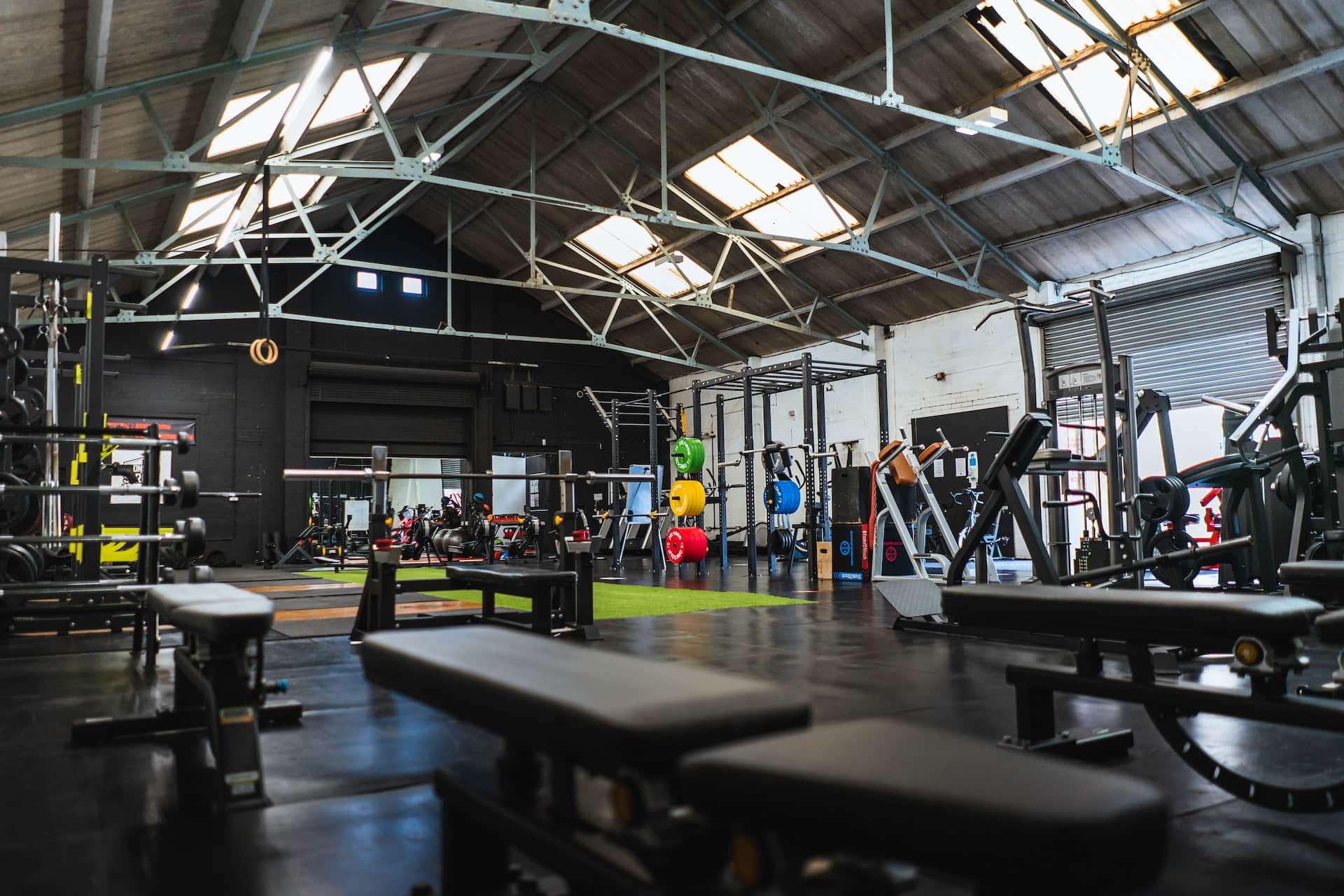

Note that we are not physicians or health practitioners – the content in this article is not intended to be health advice and you have physical conditions that will prevent you from moving heavy objects – so always seek the advice of your physician first and foremost!
Lifters, Disassemble!
Okay, so you may not be the Avengers getting ready to do battle against a DC villain, but you do have to prep yourself and the machines you need to move. The best way to do that is to disassemble large, heavy gym equipment into smaller, more manageable pieces.
If you aren’t in a hurry or feel confident completing the mission solo, grab some boxes and start with one machine.
Treadmills
These are probably the easiest big gym equipment machines to move, even though no real “disassembly” is required. Simply unplug it and either lift the belt up between the safety arms or bring the top down to meet the belt. All models can be different, so check out the owner’s manual to make sure you push in the right direction.
Also, most treadmills have wheels, so even the heaviest ones can be wheeled out by one person. Just make sure you fit through all the doorways, and watch out for your knuckles! Don’t get stuck between the doorjambs half in and half out the door.
If you don’t want to risk injuring your hands or back, grab a dolly and strap it down so you can hold on by the dolly handles instead.
Home Gyms
Home Gym systems will be the most complicated pieces to tear down. Personally, I make a diagram and notes, so I remember how it all comes apart. It makes it MUCH easier to put it all back together hours after you’ve loaded everything and taken a break before putting it all back together.
It’s also a good idea to wipe the pieces down as you box everything up, so it is clean when you reassemble. Once you have all the pieces boxed up, you can dolly the large “base” out if there is one. If you can, always try to get a second pair of hands to help you balance the weight and keep your back safe from injury.
Stationary Bikes and Ellipticals
Typically these machines only come apart slightly. The pedals or handles may come off unless you want to do a complete breakdown and take it all the way apart. This isn’t usually necessary, as they are skinny enough to fit through the door.
Grab your choice of sliders, furniture movers, or dollys to move these heavy machines safely across the floors.
Save your Surroundings
Once your heavy gym equipment is broken down for easy moving, think about how the big pieces fit through the doorways and move across the floors.
Cover your Corners
Any part of the machines that could potentially hit the wall or get stuck in the doorway as your play Tetris to get it out of the house, cover it with something soft. Use these to protect your walls and machine handles:
- Towels
- Plastic wrap
- Pool Noodles
- Packaging bubbles
- Cushions
Don’t Scratch the Floors
Whether you are moving across the same house, to a new place entirely, or out to the curb, you don’t want to slide metal or textured material across your nice smooth flooring. This is where those furniture sliders/movers, a dolly, or moving carts come in really handy.
If you don’t have any or can’t get them, you can substitute them with the following:
- Towels
- Rugs
- Blankets
- Couch cushions
- Pillows (as long as you’re ok with potentially marking them up or ripping them).
Watch your Head, Hands, and Knees
Sounds like a kid’s song, right? Head, shoulders, knees, and toes? Yup. You need to prep yourself as well as the heavy equipment you intend to move. There are protective gear options for you, and you should wear them to avoid injury.
- Gloves
- Lifting belt
- Close-toed shoes or even steel-toe boots
- Back brace
Travel Preparations
Now that you have everything boxed up and out the door, you need to make sure the truck or trailer is loaded correctly. Here goes your game of Tetris again if you have pieces of heavy equipment that don’t fit well together.
**Extra Helpful Tip- Put all your big machines in first and build around them.
Loading on an Open Trailer
If you are transporting your heavy gym equipment on an open trailer, meaning no sides or roof, then you need to step up your game.
Make sure you load the heaviest weight, not necessarily the biggest machine, towards the tongue of the trailer. The rule of thumb on trailer loading is 60/40 for weight distribution. Load 60% of your weight up front and 40% on the back half, careful to keep tucked in as much as possible.
Strap it all down once you have everything loaded. If you can, put small boxes and light equipment in the vehicle to avoid them blowing around.
If the weather calls for any type of moisture, consider traveling or loading blankets to put over everything. This is a good idea for any weather conditions, really, as the moving blankets are thick and will keep road grime, dust, and debris from getting all over your equipment while in transit.
Loading an Enclosed Space
Whether a truck bed, a box truck or a trailer with four walls and a roof, you still want to strap things down so they don’t bounce and fall over during the ride. You can skip wrapping the heavy gym equipment, as nothing should get on the machines in these cases.
The same rule applies to weight distribution. Load 60% of your weight up front and load your lighter boxes and such in the back.
Oh, and make sure you secure the trailer doors! No need to lose everything you just spent the day working on.

